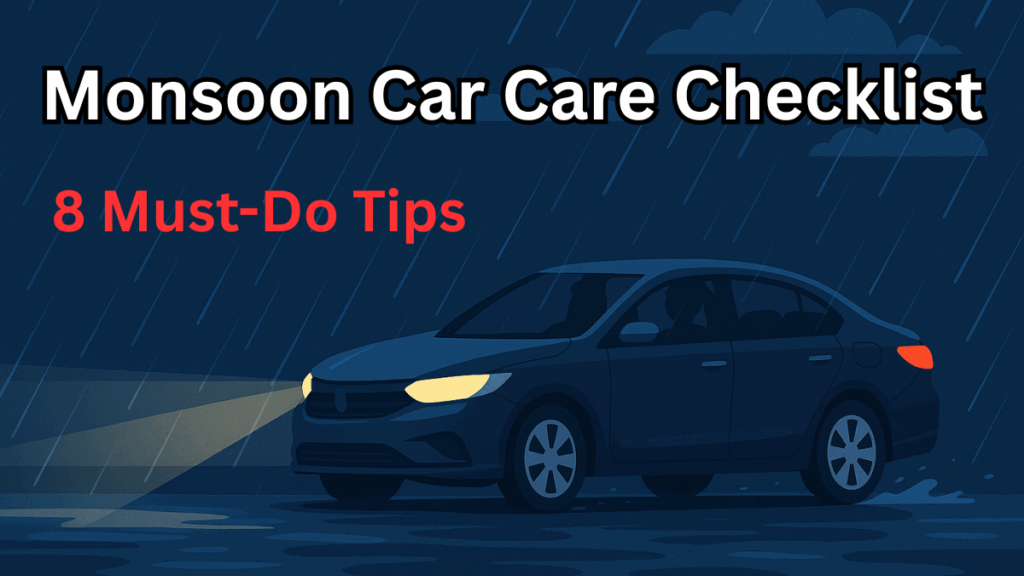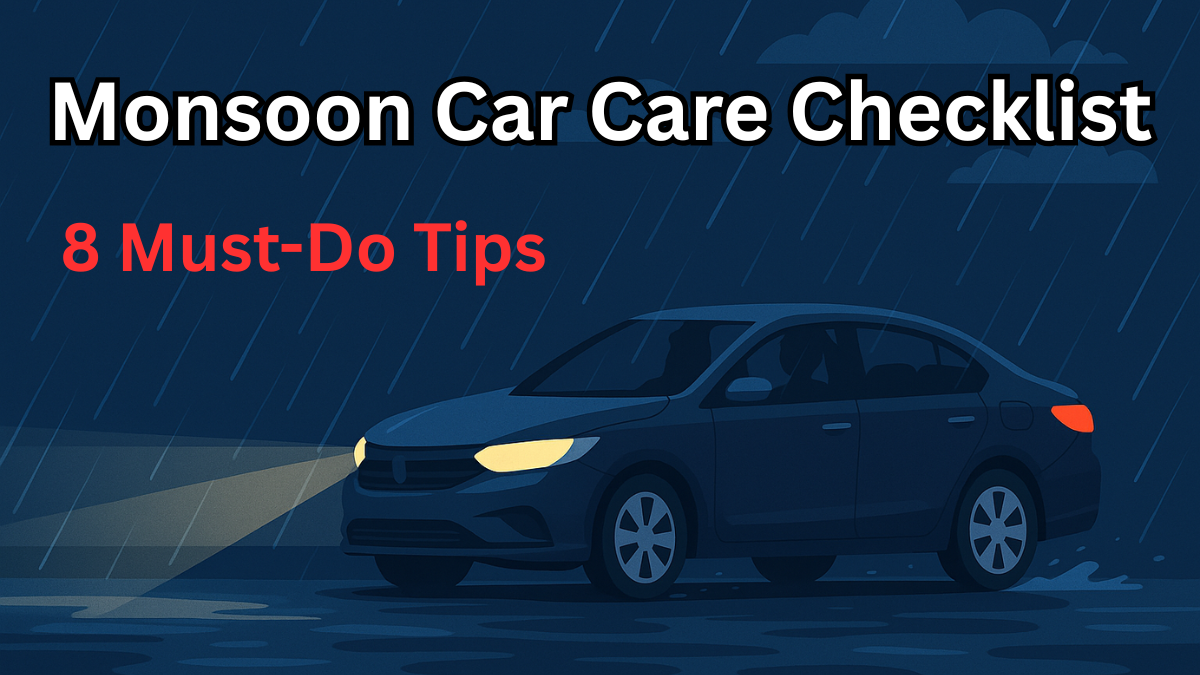Monsoons are a welcome break from the heat, but for car owners, they bring a unique set of challenges. Waterlogged roads, poor visibility, and increased chances of mechanical issues mean your vehicle needs special care.
With this practical guide to Monsoon car care tips 2025, you can protect your vehicle and ensure a hassle-free driving experience this rainy season.

Why Monsoon Car Care Matters
Monsoon rains don’t just affect roads—they impact your vehicle’s health and your safety. Here’s why it’s crucial to follow a proper vehicle safety checklist:
-
Water can damage electrical systems.
-
Braking distances increase on wet roads.
-
Poor visibility leads to a higher risk of accidents.
-
Moisture can cause rust and mold in your vehicle.
Monsoon Car Care Tips 2025: 8 Must-Do Checks
1. Check and Replace Wiper Blades
Your wipers are vital for visibility during heavy rains.
-
Replace if they’re squeaky or leave streaks.
-
Clean blades weekly for best performance.
-
Use a high-quality windshield washer fluid.
2. Test Headlights and Taillights
Visibility goes both ways—you need to see and be seen.
-
Check all exterior lights, including indicators.
-
Clean lenses to remove grime and fog.
-
Install fog lamps if your area experiences heavy mist.
3. Inspect Tyre Tread and Air Pressure
Your tyres are your first line of defense on slippery roads.
| Tyre Element | Recommended Condition |
|---|---|
| Tread Depth | Minimum 2mm for monsoons |
| Air Pressure | As per the vehicle manual |
| Sidewall Condition | Crack-free and even wear |
-
Rotate your tyres if uneven wear is noticed.
-
Avoid driving with over or under-inflated tyres.
4. Get Your Brakes Inspected
Effective brakes are non-negotiable in wet conditions.
-
Get brake pads and discs checked for wear.
-
Watch out for squeaking or reduced responsiveness.
-
Clean brake assemblies to remove mud buildup.
5. Apply Underbody Anti-Rust Coating
Rainy roads accelerate corrosion.
-
Coat the underbody to protect vital metal parts.
-
Especially important for vehicles in coastal or high-humidity areas.
6. Keep Interiors Dry and Clean
Moist interiors can lead to mold, foul odor, and discomfort.
-
Use absorbent mats or old newspapers under your feet.
-
Keep windows slightly open in parked cars (under shelter) for airflow.
-
Regularly vacuum and wipe down the interiors.
7. Battery and Wiring Check
Rain can reveal hidden electrical faults.
-
Inspect battery terminals for corrosion.
-
Ensure wiring insulation is intact.
-
Avoid parking in water-prone areas to protect electrical components.
8. Stock Up on Emergency Essentials
Always be prepared for the unexpected during the rainy season.
| Item | Purpose |
|---|---|
| Flashlight | For low-light emergencies |
| Jumper Cables | In case of battery drain |
| Umbrella or Raincoat | For roadside repairs or waiting |
| First-Aid Kit | Handle minor injuries |
| Power Bank | Keep your phone charged |
Vehicle Safety Checklist for Monsoons
Keep this quick checklist handy during the season.
| Area to Inspect | Recommended Action |
|---|---|
| Wipers | Clean or replace regularly |
| Lights | Ensure full functionality |
| Tyres | Check tread depth and pressure |
| Brakes | Ensure quick, noise-free braking |
| Battery | Clean terminals and test performance |
| Underbody | Apply anti-rust coating |
| Interiors | Keep dry and fresh |
| Emergency Kit | Update and store accessibly |
FAQs
Q1. What’s the most important tip among all Monsoon car care tips 2025?
The most critical tip is checking tyre grip and brakes. These directly impact your car’s ability to stop on slippery roads—essential for safety.
Q2. How do I keep my car’s interiors dry during monsoons?
Use moisture-absorbing mats, old newspapers under rubber mats, and park in ventilated areas. Regular vacuuming also helps prevent mold buildup.
Q3. Can I skip underbody coating if my car is new?
Even for new cars, underbody coating is recommended during monsoons—especially if you drive in flood-prone or coastal areas.
Q4. How often should I check the wiper blades?
Inspect your wipers every 7–10 days during the rainy season. Replace immediately if they leave streaks or squeak.
Final Thoughts
With these Monsoon car care tips 2025, you can ensure that your vehicle remains safe, reliable, and road-ready, no matter how heavy the downpour. Always follow a consistent vehicle safety checklist and keep your emergency kit updated.
Rain may slow the world down—but with a little preparation, your drive doesn’t have to be one of them.
Click here to learn more
